Nissan Pulsar 2013 News
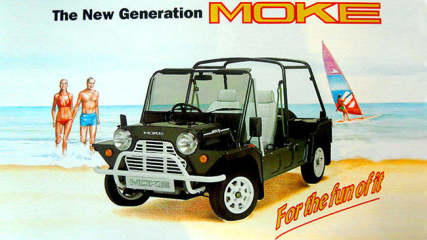
Best unsung Aussie car heroes
Read the article
By Paul Gover · 07 Feb 2014
Aussie car fans and nostalgia buffs will tell you that local motoring reached its peak in the 1970s.
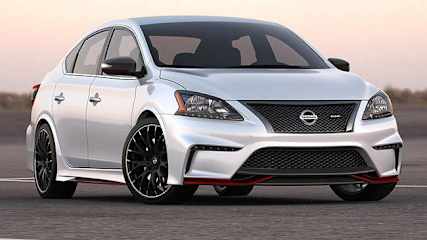
Nissan Pulsar Nismo Concept revealed | video
Read the article
By Karla Pincott · 21 Nov 2013
Nissan's performance division Nismo is putting effort into rolling out a wave of variants that put some heat under their cooking brand models. And they've injected a 'big, bad shot of adrenaline' into the mild-mannered Nissan Pulsar (Sentra in the US market) Pulsar, unveiling it at Los Angeles motor show as a hi-po Nismo version.It's dressed to thrill far better than its Pulsar seed -- even the SSS -- with aggressive race-inspired body kit, track-tuned suspension with custom springs and shock absorbers, muscled-up arches housing 19-inch wheels behind which are the Brembo brake calipers swiped from the 370Z, and some show cues such as smoked headlight glass. Nissan says the interior gets Recaro sports seats, chunky little steering wheel, Alcantara suede and carbon 'fibber' accents.But it's not a case of style without substance. Under the bonnet is a turbocharged 1.8-litre four-cylinder engine developing 179kW of power and 325Nm of torque -- trumping the Pulsar SSS by about 40kW and 85Nm -- delivered to the front wheels via a six-speed manual transmission and limited-slip differential.Nissan hasn't announced that they'll put the car into production, but have given some strong hints in the statement that they are "revisiting the small car performance genre and teasing the future with ... the Nissan Sentra Nismo Concept"."Fans have asked that we bring back a high-performance Sentra straight from the factory, just like in generations past," Nissan vice-president of product planning Pierre Loing said in the press statement. "With Nismo, our in-house motorsports arm already producing versions of the 370Z Nismo, Juke Nismo, Juke Nismo RS and upcoming GT-R Nismo, we wanted to demonstrate where we could go in the future." Watch the desktop version of the Nissan Sentra Nismo unveiling here. This reporter is on Twitter: @KarlaPincott_______________________________________
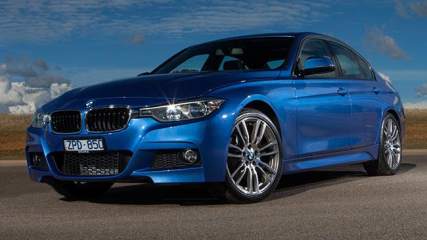
Pre-registered new cars can be a bargain
Read the article
By Paul Gover · 14 Nov 2013
The next time you go into a new-car showroom there is a key word you can use to get the bargaining started.
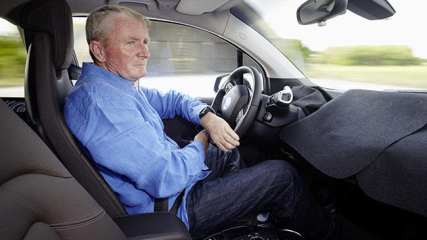
Which cars are the most comfortable?
Read the article
By Paul Gover · 14 Nov 2013
You know you're getting old when car comfort is more important than a stoplight sprint. Either that or, like me, you've recently spent too much time with doctors and comfort suddenly becomes the single most important thing in your driving day.I love the Ferrari 458, but right now I would hobble straight past the rip-snorter Italian thoroughbred on the way to a cushy Jaguar XJ limo. It would be the same situation for my first-choice funster, the Porsche Cayman.I've recently driven a race-prepared Fiat 500 Abarth and the pain was almost - almost - worse than the pleasure of romping the pocket rocket around the high-speed swoops and curves of Phillip Island. I was more than happy to slide back into the cushiness of a Chrysler 300 for the drive home, even if the seats in the motown monster don't give as much support as I normally like.The ride back to the airport got me thinking about the strengths and weaknesses of a number of vehicles that have recently passed through the Carsguide garage, focusing on how they make you feel in the body instead of in the head. Every week there are emails to CarsGuide from people of age, asking about upgrading - from a conventional passenger car into something in the SUV style that's easier on the hips and legs at mounting and dismounting time.An SUV can look like a good idea on the comfort front, but lots have bench-flat seats, crappy ergonomics and nowhere near enough suspension compliance. The Subaru Forester has a nice ride, but I prefer the seats in the Toyota RAV4. On the car front, the new Nissan Pulsar has seats that do nothing for me, but the Renault Clio is surprisingly comfy for a little, affordable car.My top favourite seat is a Recaro racing bucket that is almost shrink-wrapped to my shape, like a bathtub full of jelly that provides perfect support. But it's just about the toughest seat to get into or away from. So, right now, the first-choice comfort car is a Range Rover. It's stupidly expensive, but everything works for me, from a body that drops down on its air springs for easy access to beautifully-shaped front buckets finished in lovely leather and even a user-friendly automatic gearbox that means my left leg never has to move out of its comfort zone.This reporter is on Twitter: @PaulWardGover
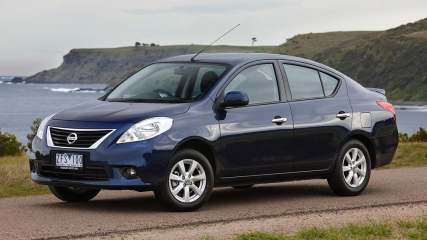
Nissan recalls 15,900 Pulsars and Almeras
Read the article
By Karla Pincott · 31 Oct 2013
The two Nissan safety recalls are for defects in the satellite sensor for the side curtain airbag on Pulsar and Almera, and for the stop light switch on the Pulsar hatch. The recall affects a total of 15,900 cars: 14,300 Pulsars and 1600 Almeras.The first of the recalls, for the Nissan Almera and Pulsar sedan and hatch, is to rectify faulty installation of sensor for the side curtain airbag in the B-Pillar, which can result in the airbag not deploying properly in a crash. The second recall is due to an incorrect stop light switch being installed in some Nissan Pulsar hatches fitted with CVT automatic transmissions. This could lead to the switch failing, preventing the stop light from working -- although braking is not affected. "There have been no incidents reported related to the safety recalls, with the fault being picked up internally by our engineers," Nissan Australia spokesperson Chris Jordan says. "Each of the fixes will take just an estimated 30 minutes to inspect the car and rectify the problem.Letters are being sent to affected owners, who can contact a local Nissan dealer to arrange for inspection and, where necessary, rectification of the front passenger airbag inflator and replacement of the stop light switch.

Hyundai i20 v Kia Cerato v Nissan Pulsar | deals
Read the article
By Paul Gover · 26 Sep 2013
Hyundai invented drive-away pricing in Australia and today it's bigger than ever. The Korean company knew it needed something special to get shoppers to sign on the dotted line back in the mid-1990s, and that something was a $990 bottom line across its models with an all-in selling price that removed the fear and uncertainty from buying a new car.Driveaway dealing started as showroom bait for the baby Excel and a new generation of first-time shoppers looking for a bargain at $13,990, in an inspired move by firebrand Hyundai executive Simon Pinnock, and has spread like a virus throughout the Australian motoring landscape since then.Lots of companies now use a driveaway deal to clear their superseded stocks, or re-ignite interest in a fading favourite, or just put some punch into their showroom push. It works, and it usually works well.Right now, Kia is heavily into driveaway dealing as its shifts from 2013 to 2014 models and is even applying the all-in effort - which can save up to $2000 in on-road costs and dealer delivery at a non-luxury brand - to its new-year arrivals. You can get a Rio manual hatch for $15,990 driveaway, compared with a recommended retail sticker at $16,290 before on-roads, and the latest deals even run up to the Carnival people mover and top-end Sorento SUV.Over at Hyundai there is a similar push, not just because of the competition from Kia but because Korea's biggest carmaker intends to be a top-three success in Australia within five years. It knows that driveaway dealing gets people into showrooms and starts its efforts at the very bottom - the i20 is now $13,990 on the road - to try and create loyal buyers who gradually move up through the range.Hyundai and Kia could be accused of racing to the bottom on the price line, but Nissan is doing even sharper deals at $18,990 on-the-road as it looks to turn its all-new Pulsar models into the biggest showroom success of the year. The cars are already locked and loaded, and being rolled onto ships in Japan every month, with the driveaway deals in Australia planned to ensure they go straight to homes without spending any wasted time parked in a dealership.We're also seeing deals with the 'drive away, no more to pay' kicker line being pushed by everyone from Holden and Ford to Subaru and Toyota, even if they are short-lived or wrapped in a different package. But that's not the end of the dollar deals, as cheap finance - down to zero at some brands - is making a bigger impact.Finance deals are partly about winning customers, but also to do it in a way that does not influence the vital resale value on a car. That's because the second hand price is determined by the 'transaction price' - the dollar number as the car is actually retailed, not the showroom sticker - and that can be badly affected by heavy discounting and even driveaway pricing. Price: from $13,990 driveawayEngine: 1.4L four-cylinder, 73.5kW/136NmTransmission: 6-speed manual or 4 speed auto, FWDThirst: 5.3L/100km Price: from $18,990 driveawayEngine: 1.8L four-cylinder, 110kW/178NmTransmission: 6-speed manual/auto, FWDThirst: 6.6L/100km Price: from $18,990 driveawayEngine: 1.8L four-cylinder, 96kW/174NmTransmission: 6-speed manual/CVT auto, FWDThirst: 6.7L/100km
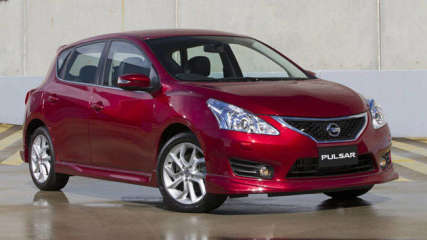
Nissan Pulsar ST price plans to shake market
Read the article
By Stuart Martin · 03 May 2013
Cue cat, assemble the pigeons - the ultra-competitive small car segment is about to get even busier.Nissan is literally hatching a plan to shake up the segment with an $18,990 kick-off price when it throws the Pulsar hatch into an already-crowded marketplace from June 1. The prodigal SSS son will also re-appear in hatch form, slotting into the Nissan pricelist at $29,240, completing the nameplate's return.Nissan is banking on a volume boost from the Pulsar's resurrection - last month they sold 1644 sedans but the segment is dominated by hatchbacks - and has priced the five-door $1000 below the equivalent sedan.The Pulsar ST manual hatch features mirrors the four-door - a 96kW/174Nm 1.8-litre four-cylinder, six-speed manual (with the option of a continuously-variable transmission model for $21,240), 16 inch alloys, cruise control, Bluetooth, power windows, cloth trim, stability control, anti-lock brakes and air conditioning among the features.Stepping up to the $22,490 ST-L puts front fog lights, an upgrade to the cloth trim, six speakers and USB/auxiliary inputs for the sound system, a rear spoiler and a leather-wrapped steering wheel.The Ti model has been left out of the hatch range, with the ST-S added as part of a sports-model duo, priced from $24,990 utilising the 140kW/240Nm double-overhead cam turbocharged direct-injection drivetrain from the SSS but sitting on 17in alloy wheels.The SSS squeaks in under $30,000 - $29,240 for the six-speed manual - and has the obligatory sports body kit, a touchscreen infotainment and satnav system, leather trim, Bluetooth phone and audio link, automatic xenon headlights, rear camera, dual-zone climate control, keyless entry and ignition.The CVT transmission - $2250 on the mainstream 1.8-litre models - is a $2500 option on the two 1.6-litre models.Introduced into Australia in 1991, Nissan last had the Pulsar SSS on its Australian pricelist in 2000, when it offered a 105kW/179Nm two-litre engine for just under $25,000.But the SSS nameplate has history with Datsun dating back to the 1960s, including the legendary 1600, as well as 180B and 200B models and appearances on the rumps of Bluebird and Stanza sedans.Nissan Australia managing director and CEO Bill Peffer is confident the return of the Pulsar hatch will be seen as a value for money. "My team and I are confident Australian small car buyers will find the all-new Pulsar hatch to be exceptional value, each grade in the model range has a compelling mix of price and standard equipment," he says.

New car sales price Pulsar ST hatchback
Read the article
By Paul Pottinger · 03 May 2013
The Pulsar ST hatchback is $18,990, or $1000 under both the recently released sedan and even its 1996 equivalent. It also undercuts by $500 Holden's base model Cruze.The four-model hatchback line-up includes the return of the SSS Pulsar, a local hero of the days before turbocharged champions such as Subaru's Impreza and the Golf GTI. The range-topping SSS is priced from $29,240 manual and $31,740 automatic.“It's a compelling balance of price and equipment in what is easily the most hotly contested new vehicle segment,” Nissan's Peter Fadeyev says.“We've worked very hard at providing the best value. The Pulsar has undergone extensive tuning for Australian conditions.”The ST and ST-L models are powered by the sedan's modest 96kW 1.8-litre four-cylinder petrol engine. The ST-S and SSS share a 140kW/240Nm 1.6-litre turbocharged direct-injection petrol engine.Standard fitment on all grades is a six-speed manual transmission. A constantly variable automatic is a $2500 option. The basic ST is more than decently equipped - better value than the Spartan entry level Toyota Corolla ($19,900) but a little less lustrous than the $19,490 Cruze Equipe.Its package includes 16-inch alloys, four-speaker audio, Bluetooth, cruise control and steering wheel-mounted audio controls. Starting from $22,490, the ST-L adds front fog lights, rear spoiler, two more speakers, 4.3-inch display and leather-accented steering wheel. The ST-S is a new grade, one that competes roughly with the turbocharged Cruze SRi, matching its 17-inch alloys.That puts the SSS in Cruze SRi-V and Opel Astra GTC terrain -- and it's equipped to that standard with xenon lights, body kit, 5.8-inch colour touchscreen with satnav, rear-view camera, leather-like trim and starter button.
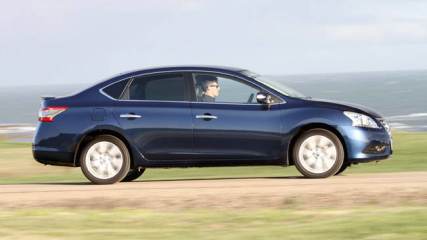
New car sales price Nissan Pulsar
Read the article
By CarsGuide team · 24 Apr 2013
The all-new Pulsar sedan is available from just $19,990 drive-away. But you had better be quick because the deal is runs only to the end of April.

What is Australia's car future
Read the article
By Paul Gover · 30 Nov 2012
The $19,990 bottom line for the upcoming Nissan Pulsar is exactly the same showroom sticker the car wore in 1996. If you think about inflation through that time - if you need a reminder, just take a look at the pump numbers rolling around the next time you're at the bowser - and all the extra equipment that now runs to standard aircon, electric windows and the rest, that's a mighty fine bottom line.But the same time hasn't been as kind to Australia's local carmakers. Ford, Holden and Toyota have all been badly hit by sagging demand for their local heroes, raising doubts about the same fatal flaws that forced Nissan and Mitsubishi to close their local operations.There have already been significant job losses during 2012, with Ford and Holden only committed to their production lines until the end of 2016 and Toyota also looking for a better business plan beyond the life of the current Aurion and Camry.There is a lot of backroom work going into cementing a future for the local makers and, even more importantly, the component makers who rely on them to provide the business foundations that keep thousands of people in jobs and new technology flowing into Australia. Holden chief Mike Devereux went public - again - with his concerns this week.It's easy to think that he's just rattling the begging bowl again and that the cash cow in Canberra has been milked dry by an industry that does not deserve to survive. Why should we be paying giant subsidies to an inefficient industry? But I know, after talking to Devereux's opposite numbers at Ford and Toyota, that his concerns are real. If these companies are going to remain in Australia for the long term, their parents in the USA and Japan expect co-investment cheques from the government.After all, do we really think that Thailand became the assembly line for Asia - with factories churning out Toyotas and Fords, Nissans and Hondas and Holdens - without significant government support? Devereux is calling for both sides of Federal politics to declare their policy for the motor industry so voters can consider their position ahead of next years election."I believe 2013 will be the year that Australian decides whether it wants an auto industry or not," Devereux says bluntly. "I just want to sell cars, I don't want to be part of the political debate in this country. "(But) I need to understand very clearly, in a forward looking sense, what each party's policy is on auto manufacturing. Are they committed to making things in this country?"All the numbers say that manufacturing cars makes no sense. But if we send Ford, Holden and Toyota packing by refusing to support their businesses, Australia looks more and more like nothing more than a giant hole in the ground that's only good for supplying raw materials to China. Where, incidentally, they're preparing the next wave of cheap imported cars for Australia.




